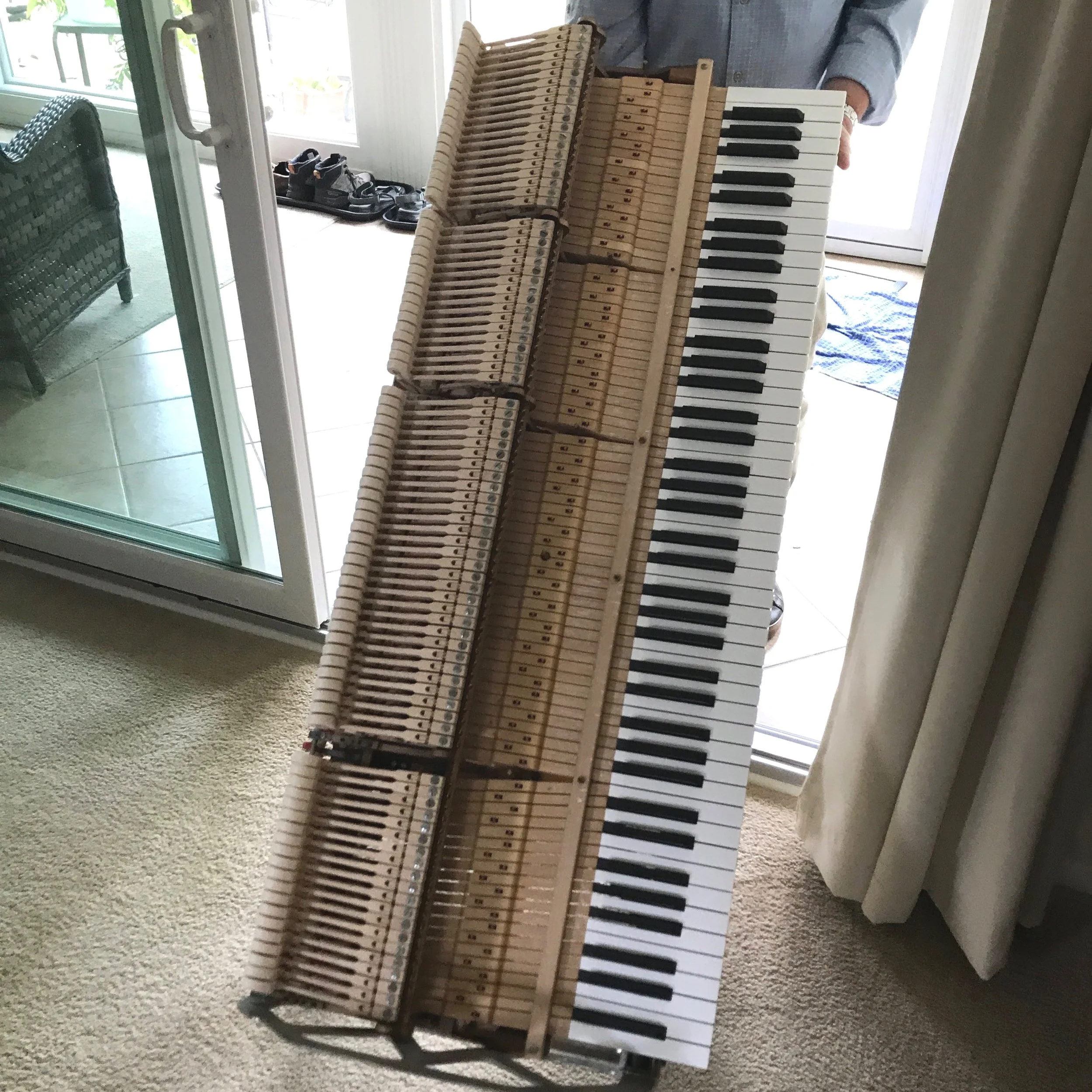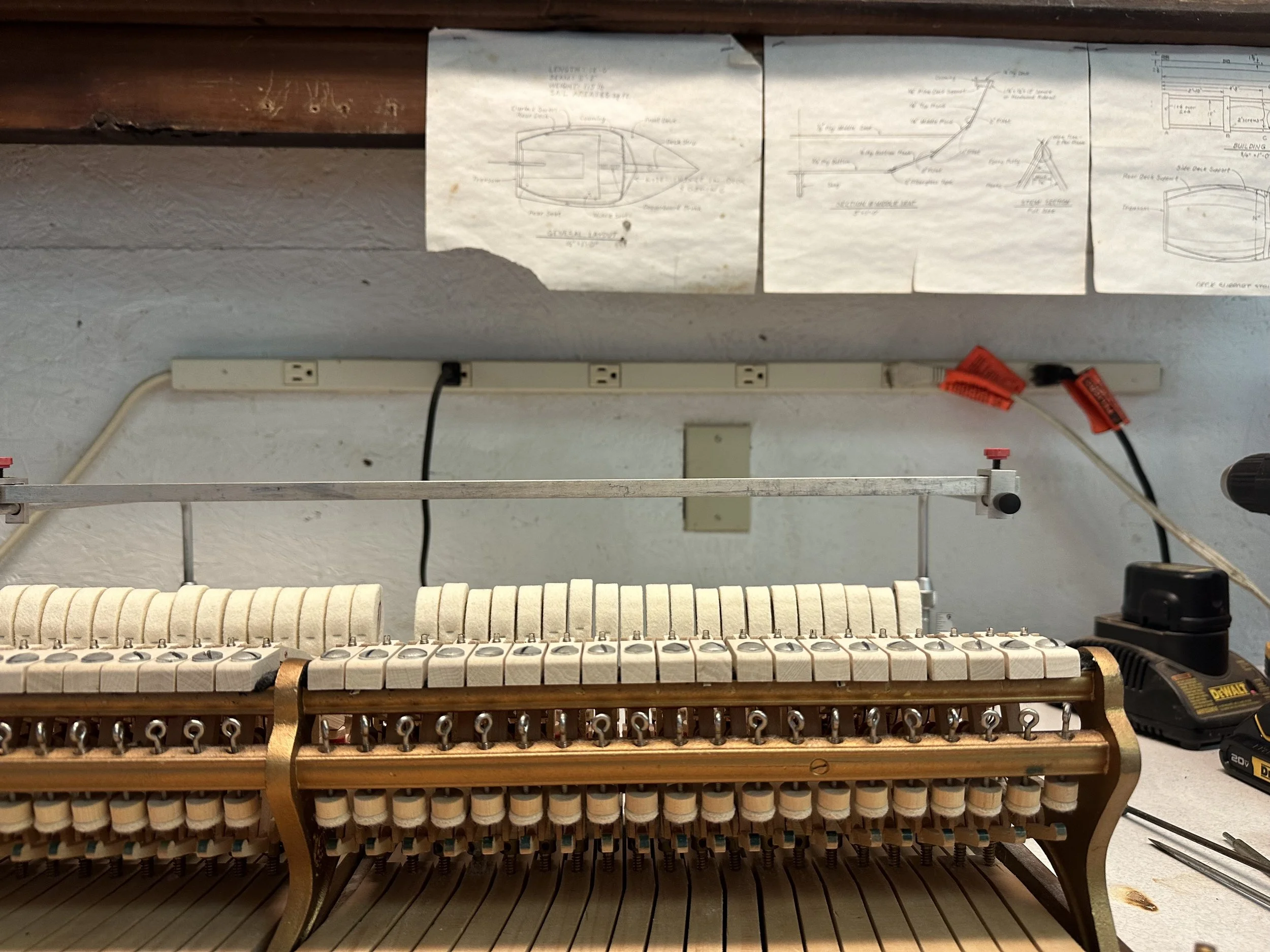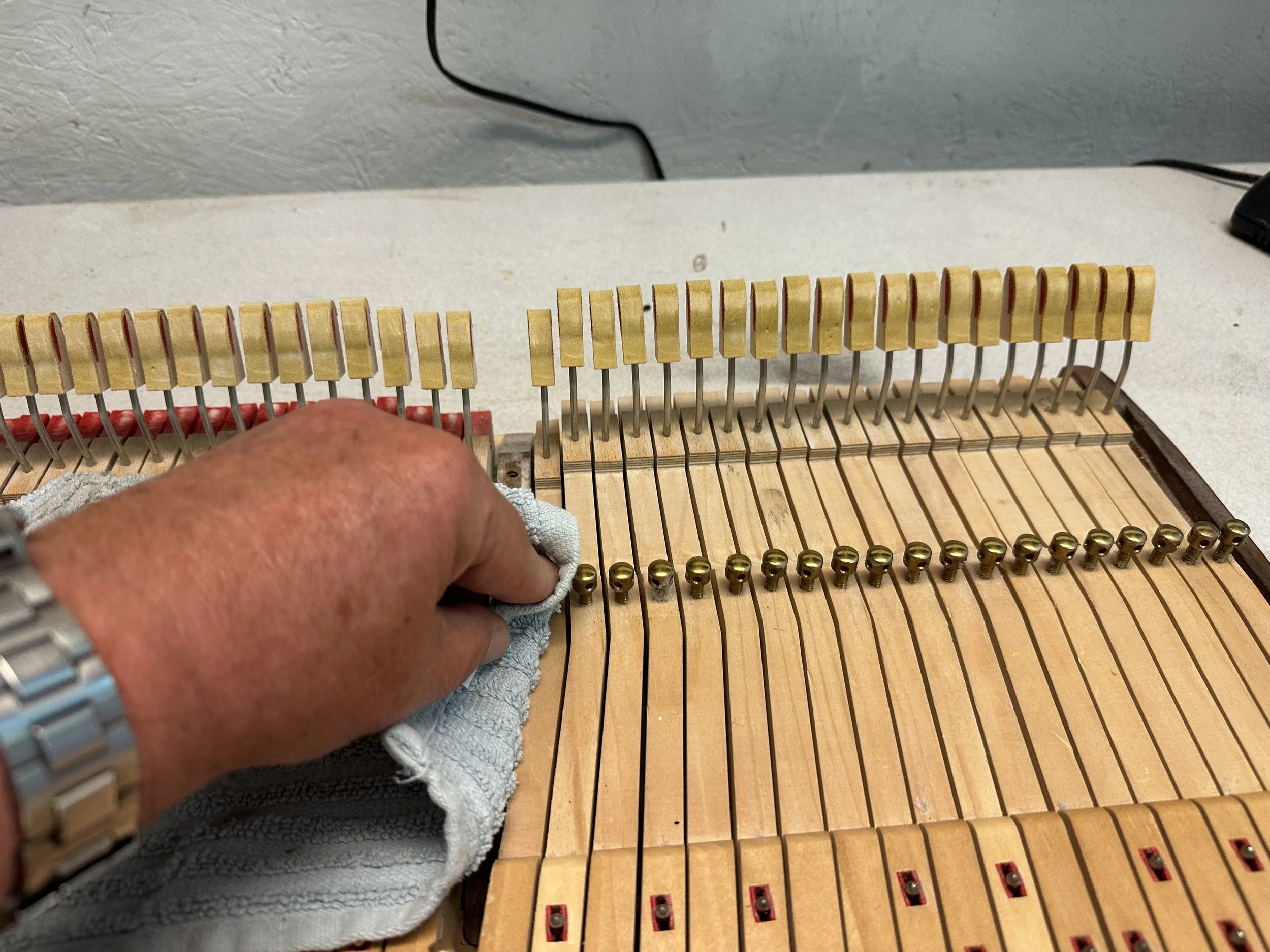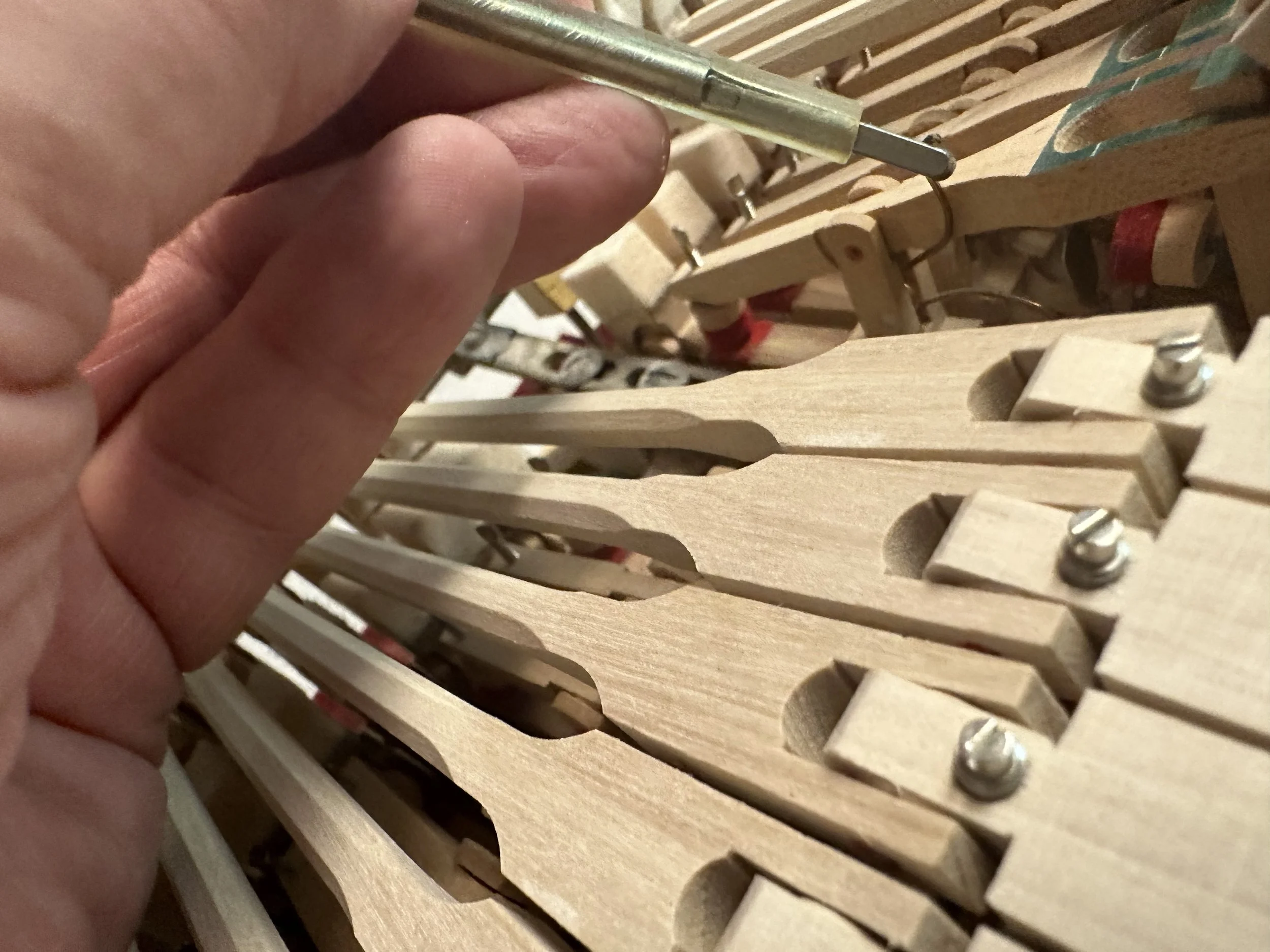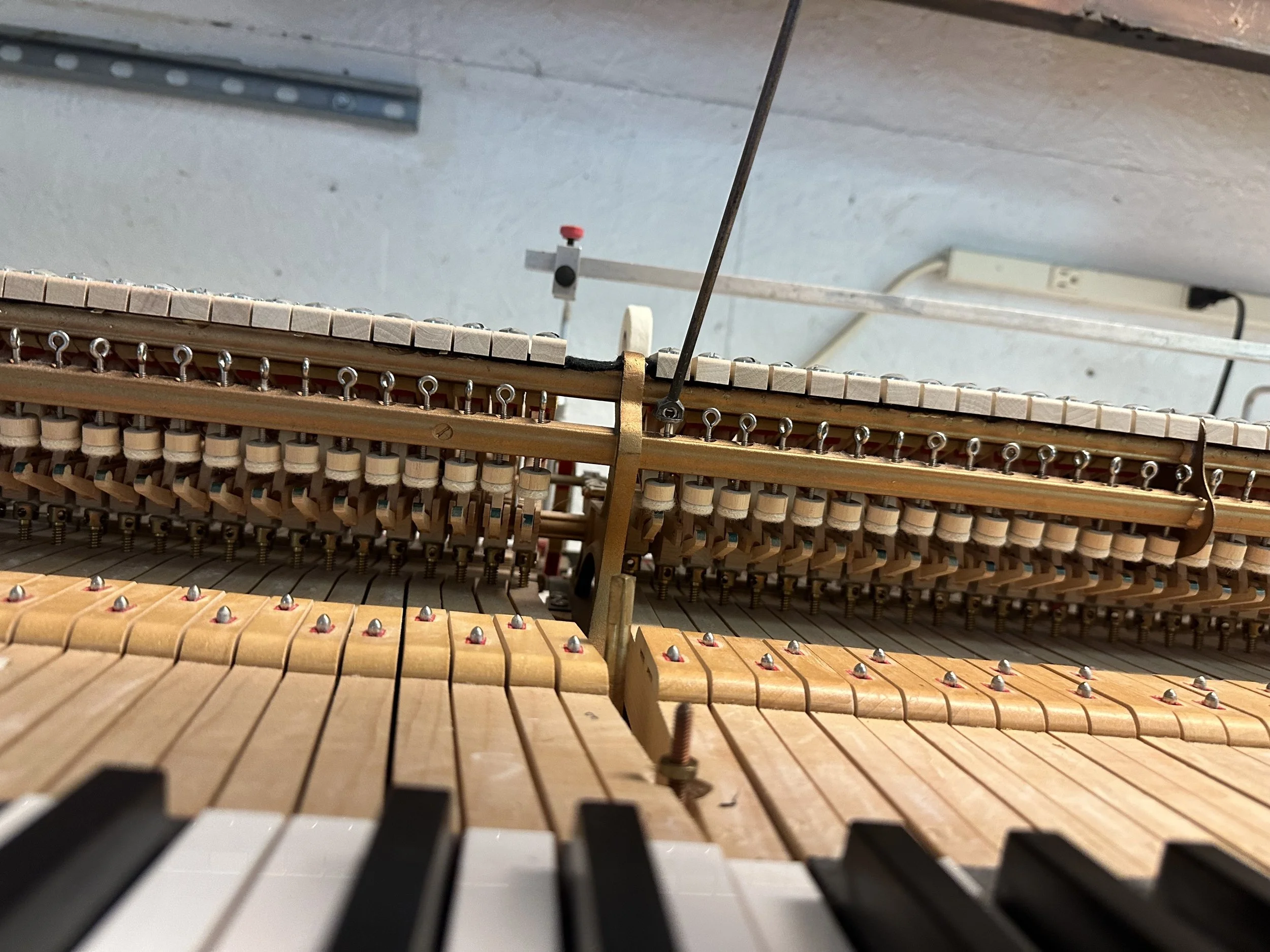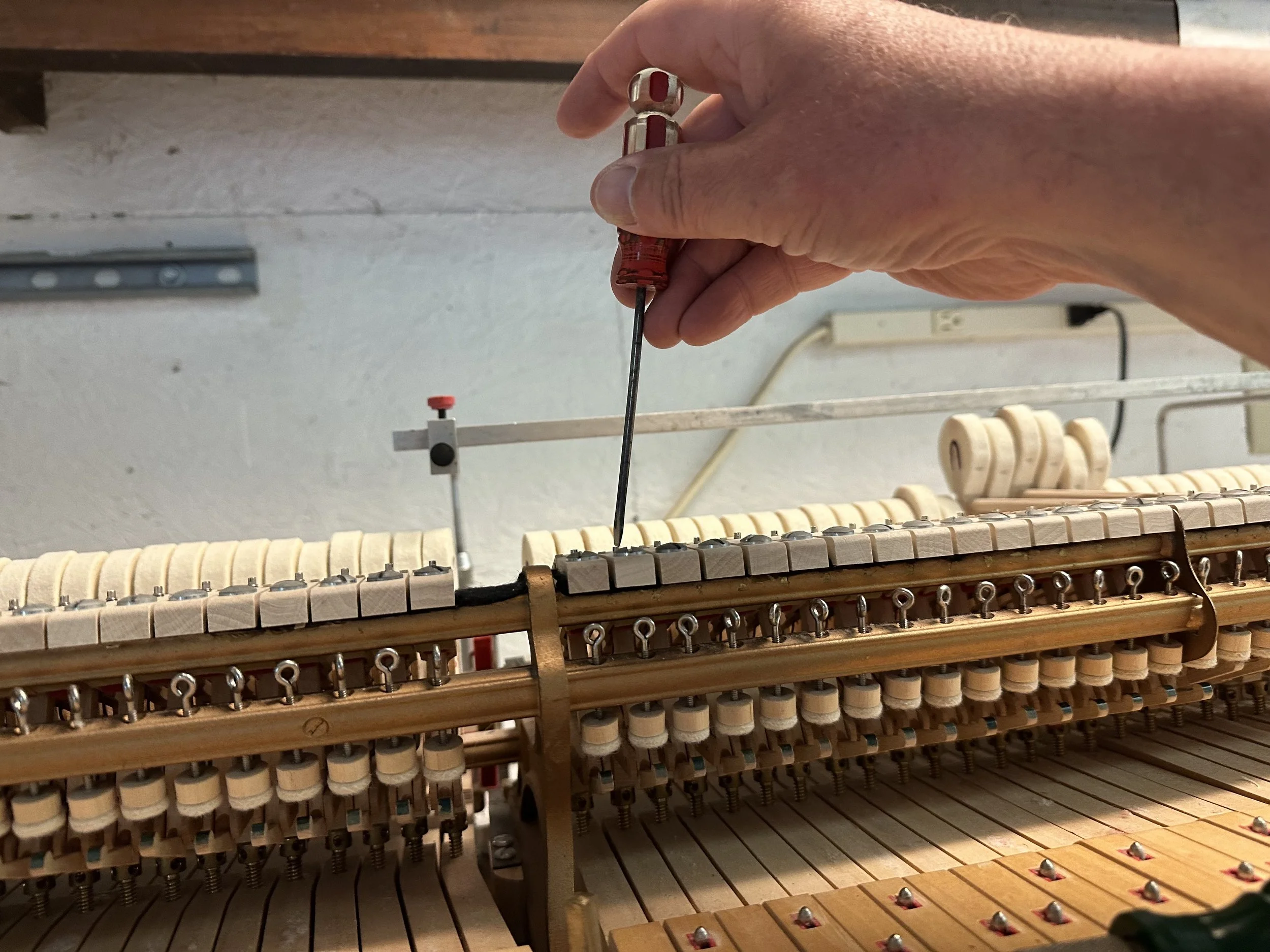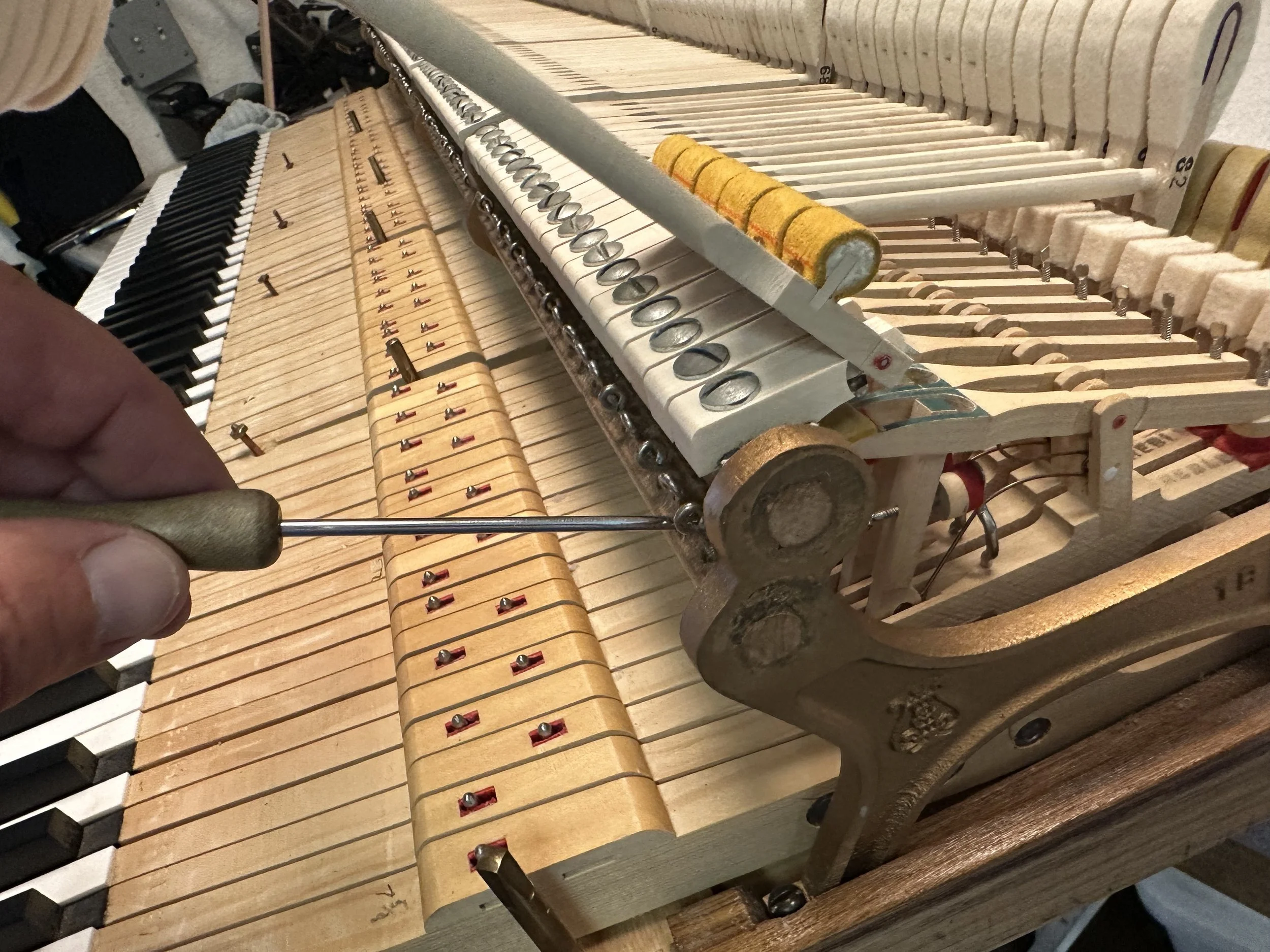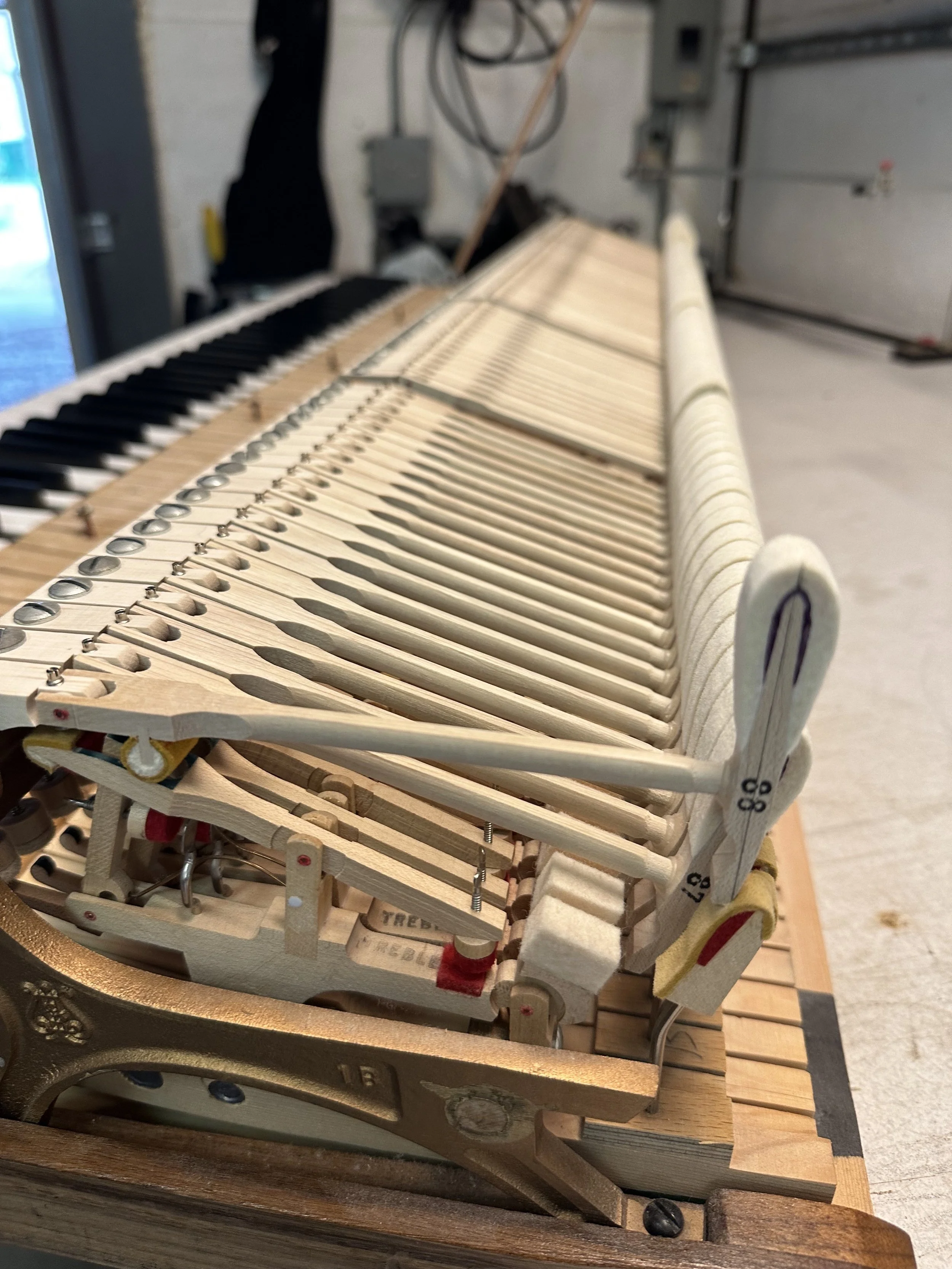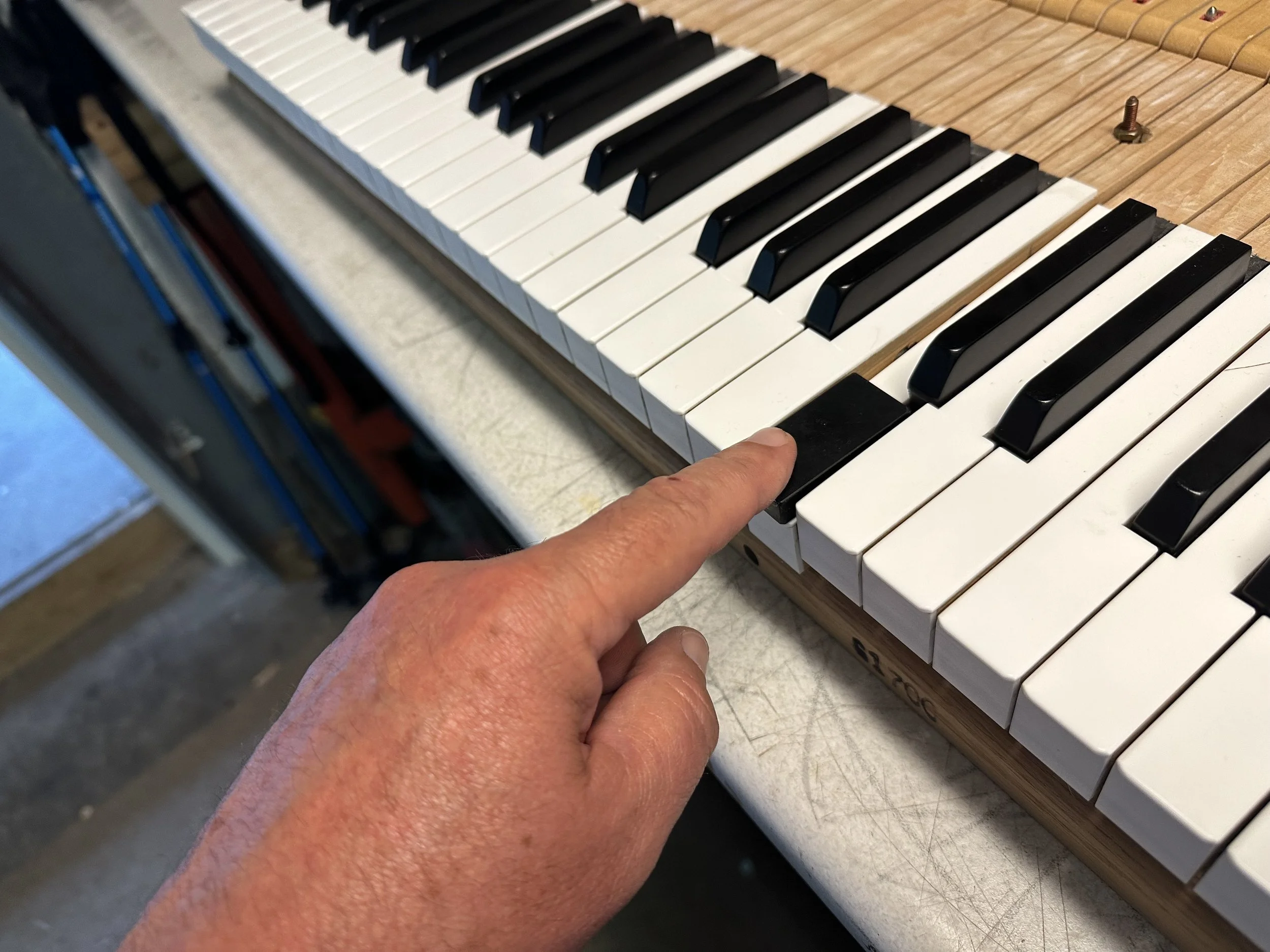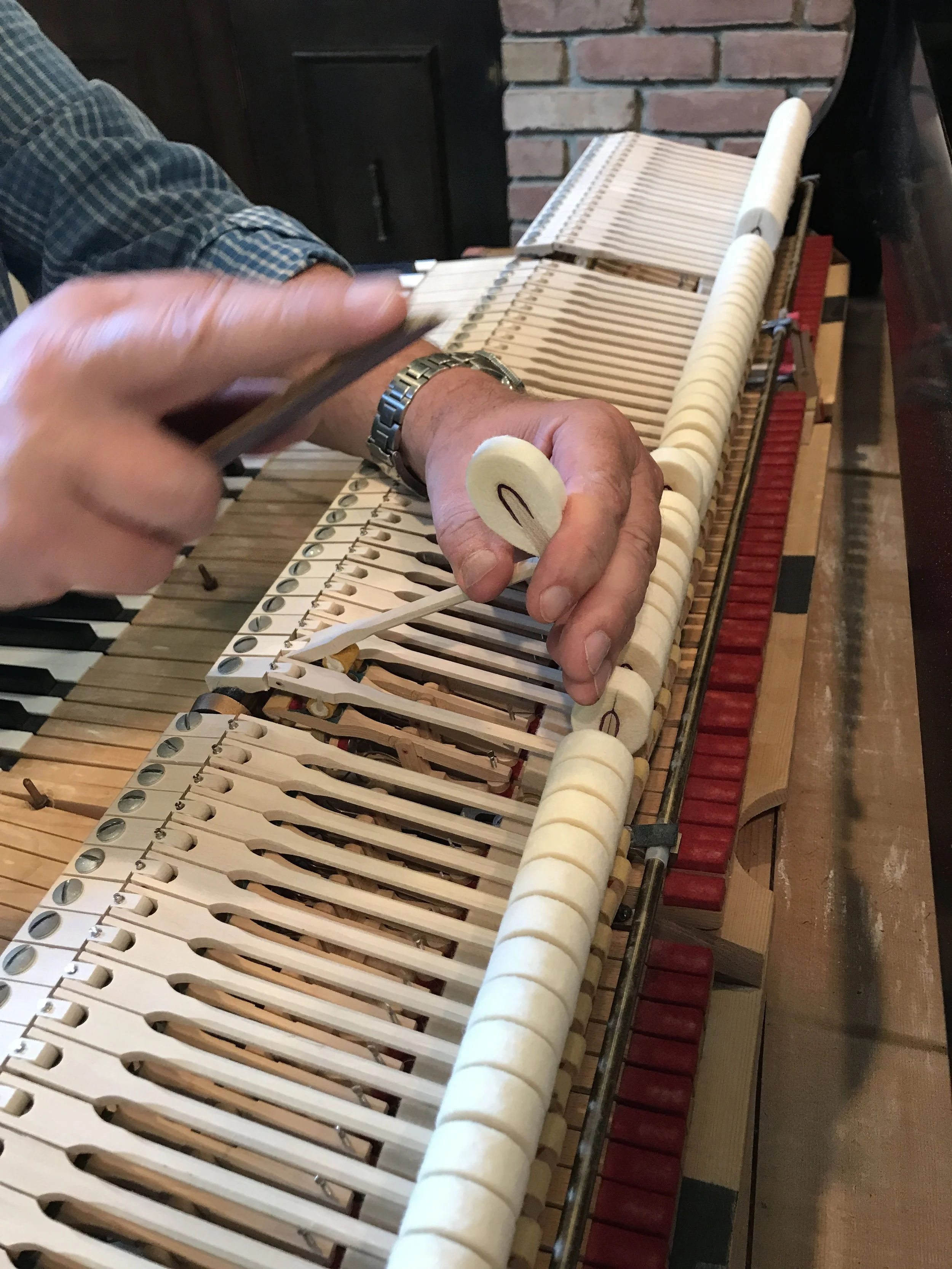A ‘NEW’ STEINWAY - Rebuilding my Model B
Steinways are wonderful pianos, I love my model B, which is the instrument I practice on, when I am not on the road. Gradually my many hours of practice did take a toll on the piano, and I noticed it sounding harsher, less imaginative, and less inspiring.
Swapping my beloved instrument with a new Steinway was something I did not feel ready for, so I talked to my piano technician Mark Shengle. We developed a plan for a complete rebuild of the piano action, found a window of time when I would be home, and started the process.
My Steinway model B in the workshop
Step 1: The new Steinway Parts arrive
The arrival of the parts was the first sign that things were in motion.
Step 2: The Workshop
What an emotional day!
Between the arrival of the parts and the day my action would go to the workshop was more than a month, so I had lots of time to anticipate this moment.
Seeing the action leave my studio made me remembered the many events I prepared on it, and I started to think how my ‘new’ piano would sound.
Step 3: In the Workshop - Lots of Details times 88
This step is where the magic happens. Mark was so kind to share images from the process. Learning more about it makes me appreciate even more the art of piano rebuilding. Below an overview of the work - all times 88 of course.
Step 4: The Return of the Action
What a day!
I could hardly sleep the night before. Here the piano action is being rolled into my studio.
Step 5: Getting the Action ready for the Piano
Once the parts are attached, it is time to install the action back into the piano.
Step 6: Voicing
Voicing is the finishing touch and an intricate process. It is key for a perfect tonal control. Here the experience and skill of a piano technician are crucial. This is the space where the vision for the sound of a true master piece comes to life.
Step 7: Tuning and Shaving
Before the piano can be tried out, it must be tuned once more. If the instrument is out-of-tune it is difficult to determine sound inconsistencies. This is the final step and another moment of focused collaboration between pianist and piano tech.
With the tuning goes the shaving of the left edges of the hammers to insure that the una corda pedal does not strike the left strings.
Thank you!
Now it is time to play in my new action. My Steinway sounds like a new instrument, and I can't wait to get to know it. Mark will come again in a couple of weeks to work on little issues that might arise during the play-in phase.
The rebuilding process of my Steinway leaves me overwhelmed with gratitude for my ‘new’ piano and for the wonderful work of my piano technician.
Thank you, Mark!
An old hammer rest block used for voicing



